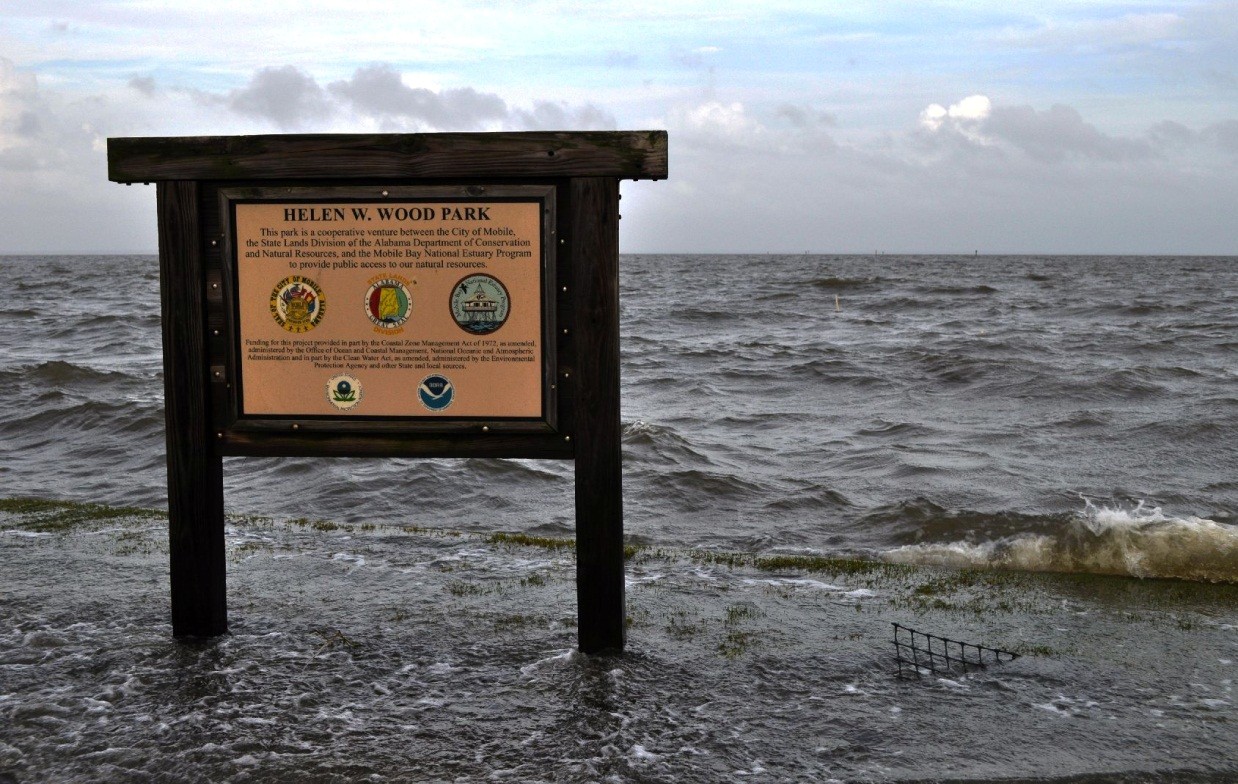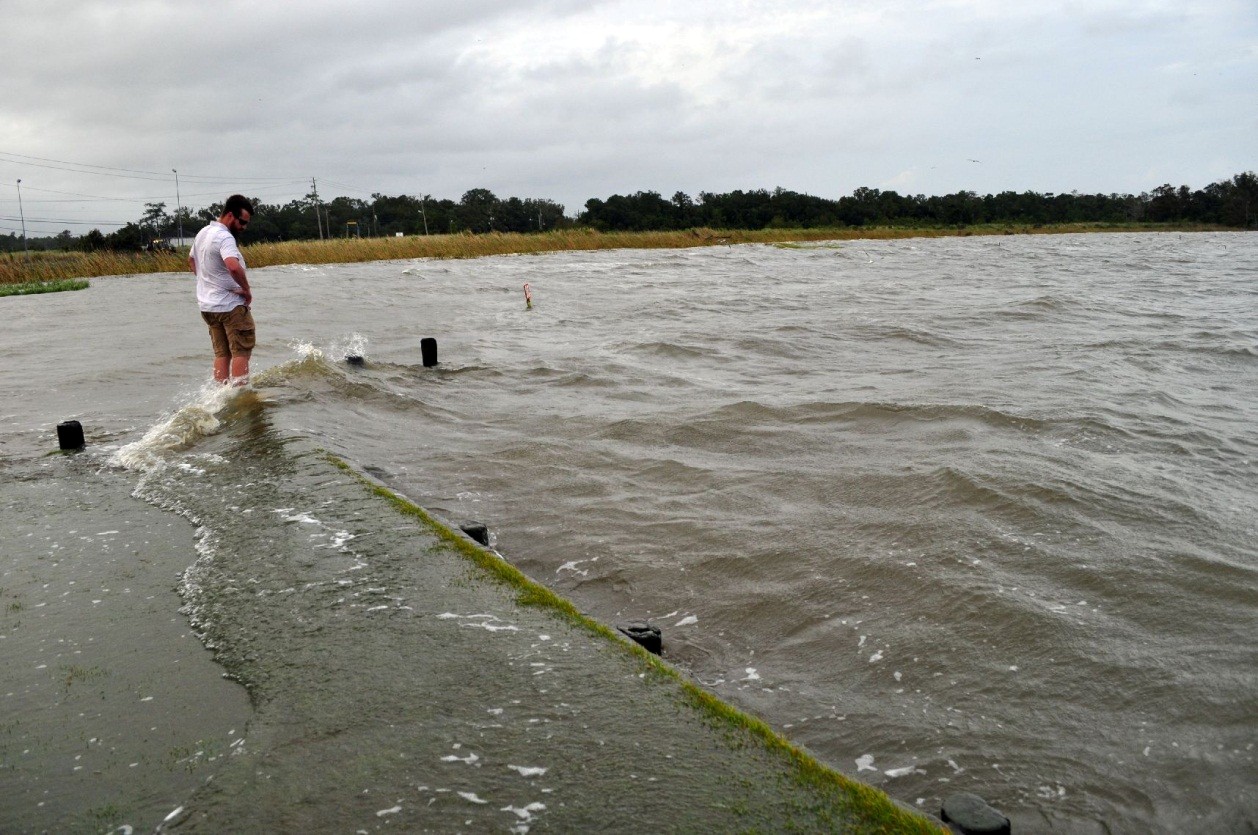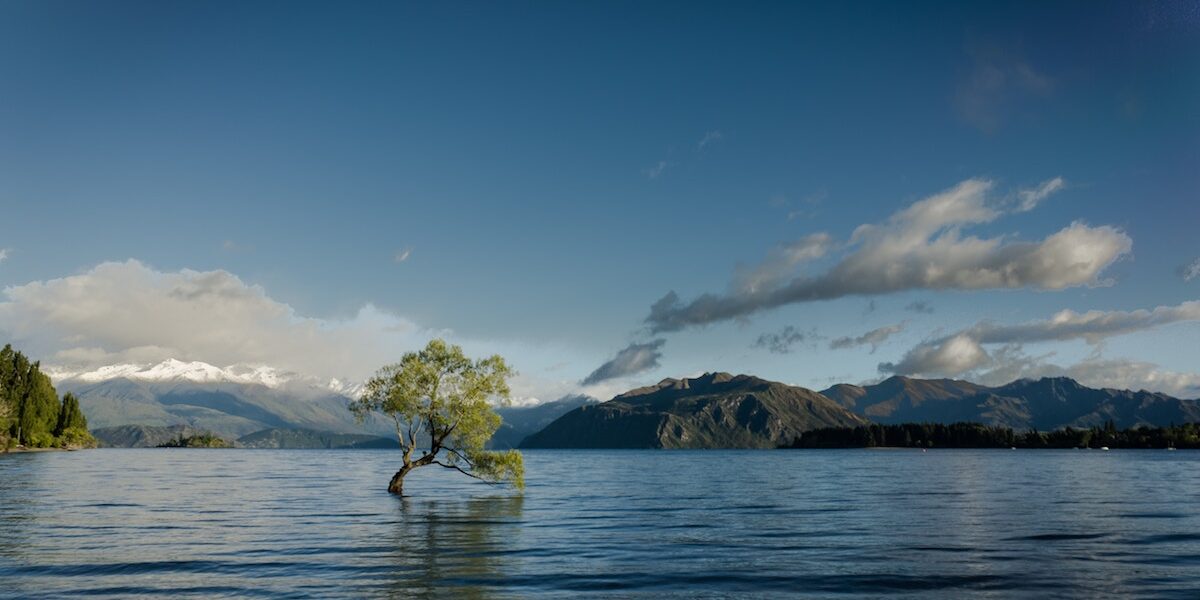by Mark J. Spalding, President of The Ocean Foundation


Helen Wood Park in Alabama Following Hurricane Isaac (8/30/2012)
During the tropical cyclone season, it is natural that discussion about the potential harm to human communities dominates the media, official announcements, and community meeting places. Those of us who work in ocean conservation also think about fishing gear losses and new debris fields following storm surge in coastal areas. We worry about the washing of sediment, toxics, and building materials off the land and into the sea, smothering productive oyster beds, seagrass meadows, and wetland areas. We think about how excess rain can flood sewage treatment systems, bringing health risks to fish and humans alike. We look for tar mats, oil slicks, and other new pollutants that can wash into coastal marshes, onto beaches, and in our bays.
We hope that some storm wave action helps churn the water, bringing oxygen to those areas we call dead zones. We hope that the infrastructure of coastal communities—the piers, the roads, the buildings, the trucks, and everything else—stays intact and safely on shore. And we comb the articles for news about the effects of the storm on our coastal waters and the animals and plants who claim them as home.
In the wake of Tropical Storm Hector and Cyclone Ileana in Loreto, Mexico last month and Hurricane Isaac in the Caribbean and Gulf of Mexico, the heavy downpours caused major sewage overflows. In Loreto, many people got sick from eating contaminated seafood. In Mobile, Alabama, 800,000 gallons of sewage spilled into waterways, leading local officials to issue health warnings to the affected communities. Officials are still surveying vulnerable areas for other signs of pollutants, both the expected chemical & petroleum impacts. As Seafood News reported this week, “Finally, tests have confirmed that Hurricane Isaac did indeed wash up globs of BP oil, left over from the 2010 spill, onto Alabama and Louisiana beaches. Officials did anticipate that this would happen with crews already working to clean up the oil. Furthermore, experts have been quick to point out that the amount of exposed oil is ‘night and day’ compared to 2010.
Then there are the cleanup costs that you might not think of. For example, the collection and disposal of tons of animal carcasses. In the wake of Hurricane Isaac’s repeated storm surges, an estimated 15,000 nutria washed up on the shores of Hancock County, Mississippi. In nearby Harrison County, official crews had removed more than 16 tons of animals, including nutria, from its beaches in the first days after Isaac battered the coast. Drowned animals—including fish and other ocean creatures—are not unusual in the wake of significant storm surge or heavy flooding rains—even Lake Pontchartrain’s shores were littered with the carcasses of nutria, feral hogs, and an alligator, according to press reports. Obviously, these carcasses represent an additional cost to communities who wish to re-open for coastal tourism in the wake of a storm. And, there are likely to be those who applauded the loss of the nutria—a remarkably successful invasive species that reproduces easily and often, and can cause enormous harm.
As a report from the Wildlife Services program of the USDA’s Animal and Plant Health Inspection Service states1, “The nutria, a large semi-aquatic rodent, was originally brought to the United States in 1889 for its fur. When [that] market collapsed in the 1940’s, thousands of nutria were released into the wild by ranchers who could no longer afford them…Nutria are most abundant in the Gulf Coast states, but they also cause problems in other southeast states and along the Atlantic coast…nutria destroy the banks of ditches, lakes, and other water bodies. Of greatest significance, however, is the permanent damage nutria can cause to marshes and other wetlands.
In these areas, nutria feed on native plants that hold wetland soil together. The destruction of this vegetation intensifies the loss of coastal marshes that has been stimulated by rising sea levels.”
So, perhaps we can call the drowning of thousands of nutria a silver lining of sorts for the shrinking wetlands that played such an important role in protecting the Gulf and can again with help. Even as our partners and grantees along the Gulf struggled with flooding, loss of electricity, and other issues in the aftermath of Hurricane Isaac, there was good news too.
The vital role of wetlands is recognized globally under the Ramsar Convention, about which former TOF intern, Luke Elder recently posted on the TOF blog. TOF supports wetland conservation and restoration in a number of places. One of them is in Alabama.
Some of you may recall previous reports about the TOF-hosted 100-1000 coalition project in Mobile Bay. The goal of the project is to re-establish 100 miles of oyster reef and 1000 acres of coastal marsh along the shores of Mobile Bay. The effort at each site begins with the establishment of an oyster reef just a few yards from land on a man made substrate. As sediment builds in behind the reef, marsh grasses re-establish their historic landhold, helping to filter water, mitigate storm damage, and filter water coming off the land into the Bay. Such areas also serve as vital nursery for juvenile fish, shrimp and other creatures.
The first of the projects to achieve the 100-1000 goal took place in Helen Woods Memorial Park, near the bridge to Dauphin Island in Mobile Bay. First there was a big clean-up day where I joined hard-working volunteers from Mobile Baykeeper, Alabama Coastal Foundation, National Wildlife Federation, The Nature Conservancy and other organizations in hauling away tires, trash, and other debris. The actual planting took place a few months later when the water was warmer. The project’s marsh grasses have filled in nicely. It’s exciting to see how a relatively small amount of human intervention (and cleaning up after ourselves) can support natural restoration of historically marshy areas.
You can imagine how anxiously we waited for reports about the project in the wake of the flooding and storm surge caused by Hurricane Isaac. The bad news? The park’s manmade infrastructure will require serious repairs. The good news? The new marsh areas are intact and doing their job. It’s reassuring to know that when the 100-1000 goal is achieved, the human and other communities of Mobile Bay will benefit from the new marshlands—both in hurricane season and the rest of the year.







